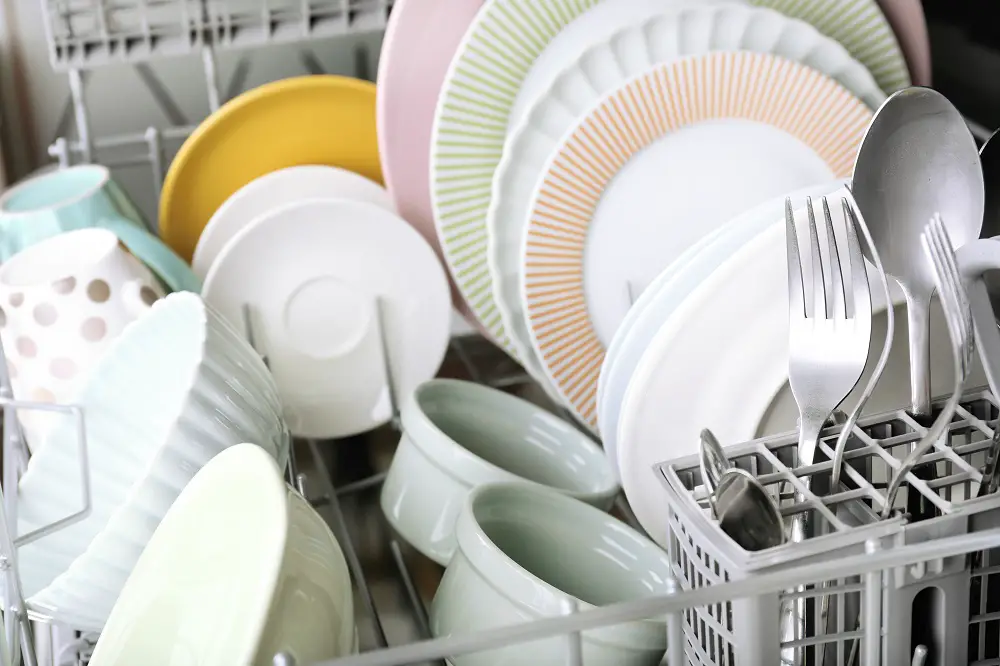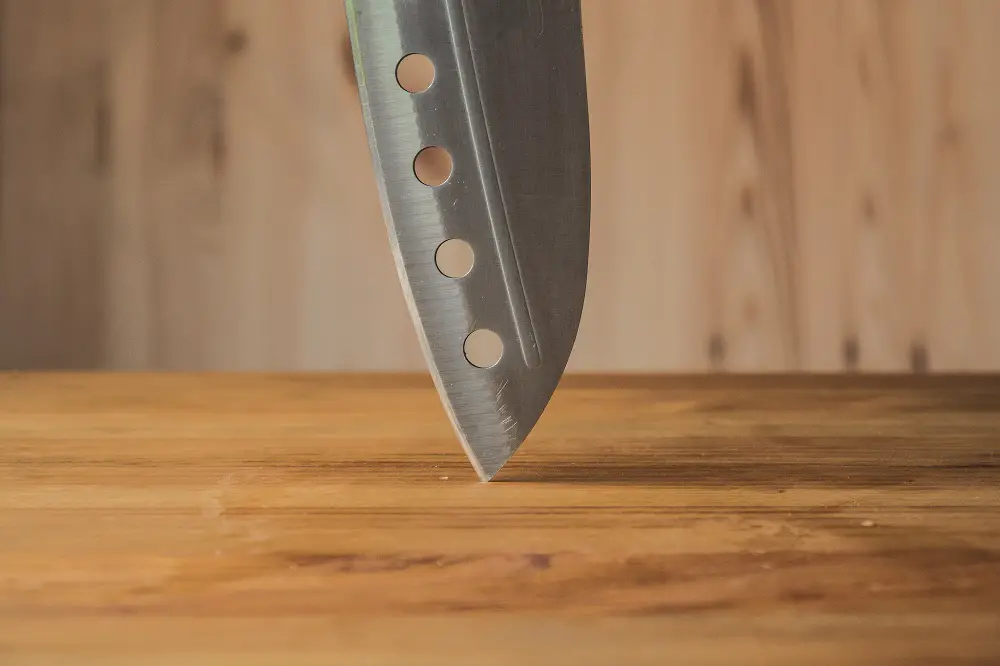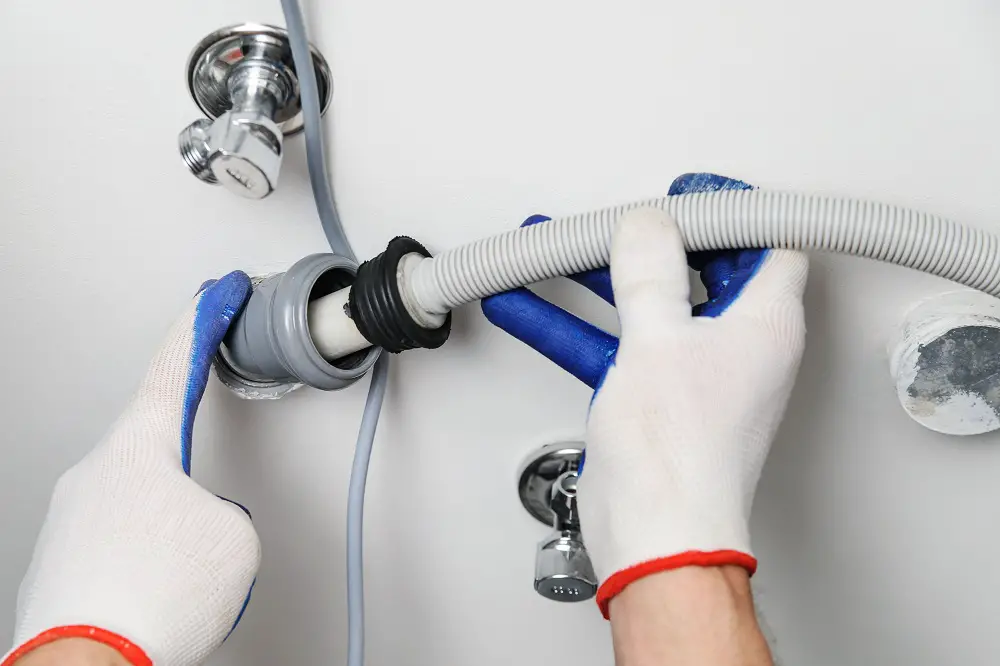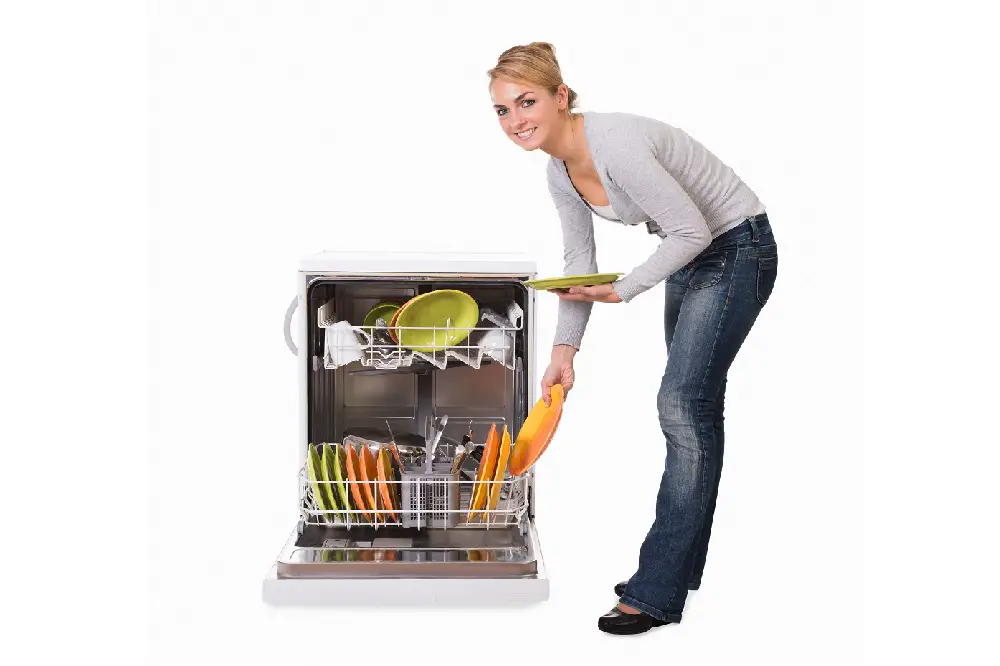If you have a portable dishwasher leaking with each use, it’s best to address the problem sooner. Leaks, if not fixed, can lead to more significant problems than puddles in your kitchen; there could be damage to your flooring and subflooring.
Common problems causing your portable dishwasher to leak include hose issues, an unlevelled appliance, a damaged door gasket, or internal component issues. Most of these problems can be fixed without replacing the appliance.
There are several reasons why your dishwasher might be leaking.
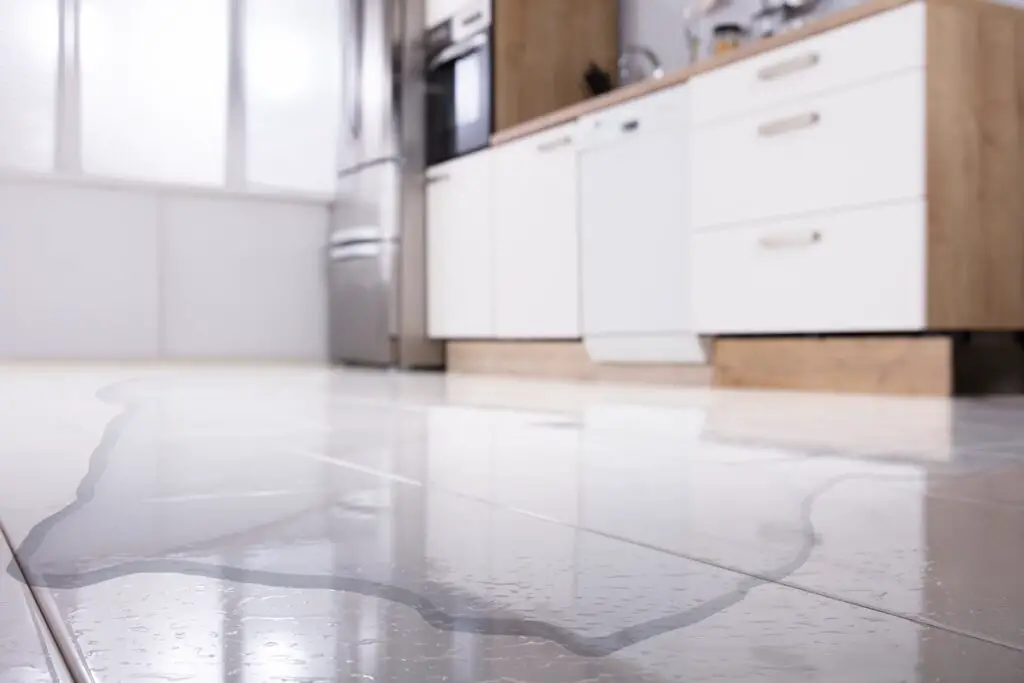
The leaks could be around the door, from the front, or at the bottom of the unit. If you can’t figure out where the leak is coming from or how to fix it, read on to know the possible causes and solutions.
Table of Contents
19 Reasons for a Leaking Portable Dishwasher and How To Fix It
Here are the different reasons your portable dishwasher could be leaking, along with the fixes for each problem.
Always unplug your portable dishwasher from the power supply and then start looking for the source of the leak.
Keep the user manual handy to figure out which parts you must check to figure out the leak.
Techjut tip: NEVER throw away your hardcopy manual. It can be difficult to find the document online and we encountered problems with the service several times.
1. Improper Placement
A dishwasher that’s improperly installed or placed can cause leaks. If your portable dishwasher is not level, the door might not close properly, and water can leak out of the machine.
Free-standing dishwashers on wheels could be out of balance if not kept level, and countertops can be unbalanced if not placed on a leveled counter or surface.
How To Fix Improper Placements
Use a spirit level and ensure your dishwasher is on a level platform before using it to prevent leaks due to improper placement.
If the platform isn’t level adjust the leveling legs or place a small piece of plywood beneath the dishwasher to keep it level,.
If you’re uncertain how to set up and use your dishwasher after consulting the manufacturer’s guide, look for some tutorials online or ask for a demo from a professional.
2. Damaged Dishwasher Tub
If the dishwasher tub has a crack or is damaged, it will cause water to leak out of the appliance.
This could happen when you place any heavy items on top of the dishwasher, causing damage to the tub.
How To Fix A Damaged Tub
Remove the dish rack/s.
Check for any cracks or damage to the dishwasher tub by inspecting the appliance’s interior for signs of wear or cracks.
If you find any such issue, the only fix is to replace the dishwasher with a new one.
Dishwashers with plastic tubs are more prone to damage than ones with stainless steel tubs.
3. Faulty Dishwasher Pump
The dishwasher pump helps circulate water inside the tub during the wash cycle. A damaged or faulty pump could be a cause for the dishwasher leaking.
How To Fix A Faulty Pump
Turn off the power to the dishwasher and check the pump for any wear or damage.
Call a professional to check it for you if you cannot do it. And if the pump has any issues, you’ll have to replace it with a new pump.
4. Clogged Filter
The dishwasher filter catches the residual food washed off your dishes and prevents it from getting into the internal part of the appliance (which may cause damage).
When the filter isn’t emptied regularly, it gets clogged and prevents the water from draining efficiently, resulting in water leaking out of your portable dishwasher.
How To Fix A Clogged Filter
- Remove the dish rack (lower rack for free-standing models) and take out the filter.
- Keep it under running water to clear any food residue.
- Use a soft toothbrush and warm soapy water to scrub off stubborn residue.
- Follow with a thorough rinse.
It is good practice to empty or rinse the dishwasher filter after each use.
5. Damaged Door Gasket or Latch
The dishwasher door has a rubber gasket that runs around its edge, creating a watertight seal preventing water leaks during a wash cycle. The door gasket can wear out or get damaged over time (dry out, become brittle, and crack after years of use) and cause water to leak from the dishwasher door.
Also, a loose or bent latch prevents the door from closing properly.
Sometimes, the door screws can become loose, preventing the gasket from sealing.
How To Fix A Door Problem
Open the dishwasher door and inspect the door gasket for any signs of wear or damage.
If you find any damage, tears, or cracks in it, replace the gasket.
Get the replacement gasket for your dishwasher model from an authorized service center, a retail outlet that sells the model, the manufacturer’s website, or online.
For a loose latch, use a screwdriver to tighten it in place; for a bent one, replace it.
Check the door screws for any loose ones.
Tighten them till they make contact with the door surface firmly.
6. Loose Hose Connections
Your portable dishwasher has an inlet supply hose and drain hose. If these hose connections become loose, water will leak out at the connection point on the dishwasher or the faucet.
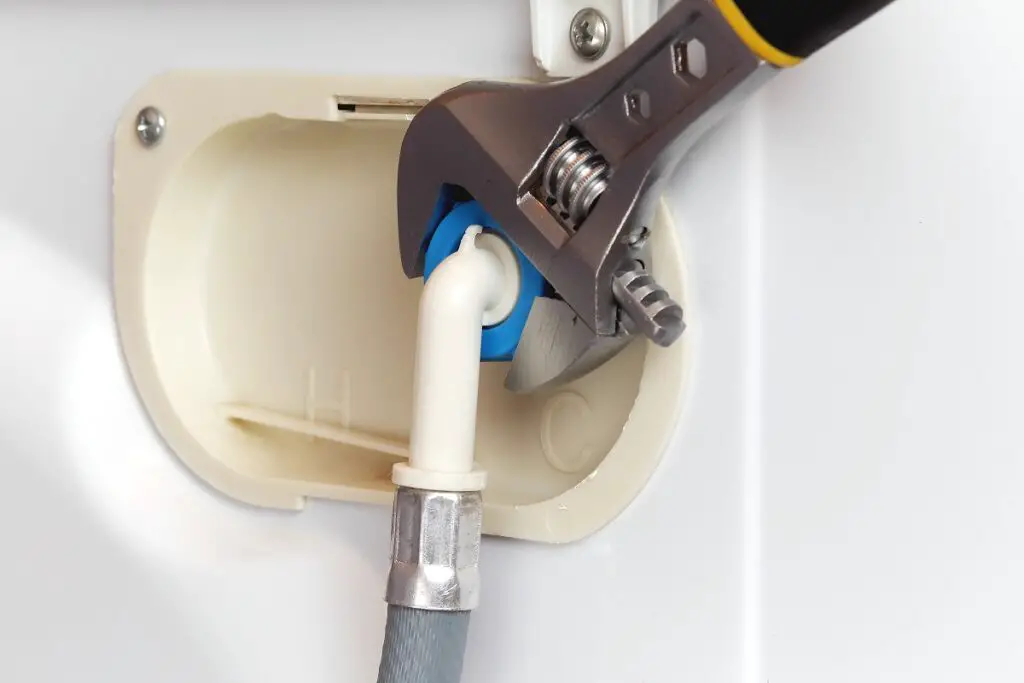
The hose clamps are more likely to loosen over time, resulting in leaks.
How To Fix Loose Hoses
With the dishwasher not plugged into the power supply, check the water supply hose at both ends and the drain hose at the dishwasher end for any loose connections.
Tighten the hose connections and watch for leaks or drips in the next wash cycle.
7. Damaged Hose
Apart from loose hose connections, there’s also the chance that either your inlet or drain hose might be damaged (cracks or tears), and water will leak out while filling (for damaged inlet hose) or while draining (for damaged drain hose).
Interested in the draining process of your portable dishwasher? Read our guide on how the drainage of portables works.
How To Fix A Damaged Hose
Since with a portable dishwasher, the inlet and drain hoses run almost parallel between the appliance and sink, small water puddles beneath these hoses indicate a damaged hose.
To know which is the leaky hose, observe the hoses during a wash cycle.
Replace the damaged hose with a replacement hose accordingly.
8. Leaking Unicouple
Most modern portable dishwashers use a unicouple connection. While this is a convenient way to run the dishwasher, if there are any issues with the unicouple, it will lead to a leak.
How To Fix A Leaking Unicouple
Figuring out the exact problem with a unicouple might be tricky.
First, you must locate the point at which the leak occurs, for which you must run a dishwasher cycle.
Once you’ve found it, you can figure out if it requires a minor repair (replacing the sleeve/spring/snap ring/ball bearings).
In the worst case, you might want to replace the entire unicouple with a new one.
9. Something Is Obstructing the Door
There could be any item obstructing the dishwasher door from closing all the way. Unless the door closes properly, the door gasket won’t be able to prevent water leaks.
It could be the rack not pushed back completely or some improperly placed dish preventing the door from closing properly.
How To Fix An Obstructed Door
Remove any items blocking the door, especially large items not correctly placed in the dish rack.
Push the rack/s in and check the door seal to be sure it’s in a good state.
If you must add a dish after starting the dishwasher, keep the door open for a few seconds to prevent the cold air from expanding too fast (this can cause water leaks through the door vent).
10. Using the Wrong Detergent
Most modern dishwashers are designed to function with minimal water for each wash cycle, thus making them highly efficient. Such appliances require the use of HE detergent.
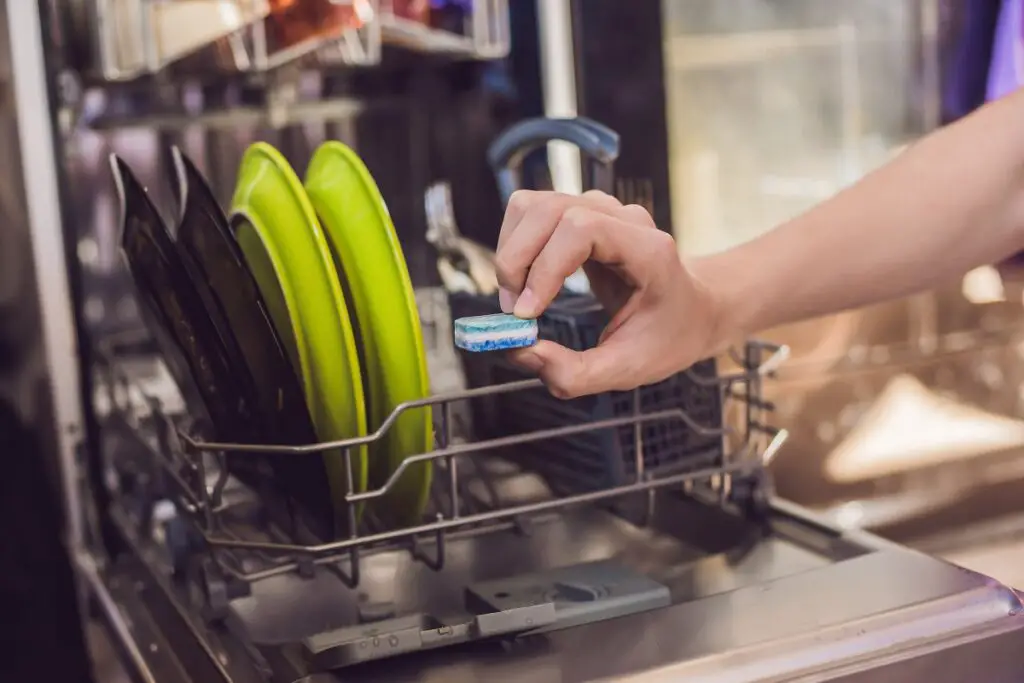
Using the wrong detergent type will result in excessive soap suds, possibly causing water to leak from the dishwasher.
Certain soaps, like laundry detergent, dish soap, or hand soap, are unsuitable to use with a dishwasher.
How To Fix A Detergent Problem
Refer to the user manual to know which detergent you must use with your portable dishwasher.
Avoid using an old or clumping detergent, as it may cause excessive suds that leak out the door frame; only use fresh detergent.
11. Using Excess Detergent
As important as using the suitable detergent is to also use the right amount of it.
Using more detergent than recommended might produce excessive soap suds in the dishwasher tub, causing water to leak out.
How To Fix A Detergent Excess
Only use the recommended quantity of detergent for each wash cycle. If you have soft water, use less detergent.
Avoid overfilling the rinse aid dispenser since the rinse aid can leak into the dishwasher tub.
Since countertop dishwashers have a reduced capacity than free-standing or built-in models, it’s best to avoid using detergent pods in countertops.
Consult the user manual to check how much detergent is required for the wash cycles.
12. Clogged Hose
The drain hose expels the dirty water back into the sink. There’s the chance that the drain hose can clog and cause water to back up, leading to a water leak.
How To Fix A Clogged Hose
Check the dishwasher’s drain hose regularly (once weekly) for clogs.
Use a hose-cleaning brush or a vacuum cleaner to clean it if it’s dirty.
13. Soiled or Dirty Door Gasket
If the door seal or gasket is dirty, it will prevent the door from being properly sealed, causing leaks.
It could be due to mold/mildew buildup or grease/food residue buildup.
How To Fix A Door Gaket Problem
Run your hand along the length of the door’s gasket to see if it’s soiled.
If so, use a sponge (or an old, soft toothbrush), some mild soap, and water to clean it.
After giving it a good scrub, wipe it dry with another clean cloth and check if the door closes correctly.
For mold or mildew, spray 3% hydrogen peroxide over those spots.
Cleaning is an important step in maintaining efficiency and ease of use. Read our article about how to clean a countertop dishwasher.
14. Water Supply Line Leaking
If the water supply hose doesn’t fit (or stay) on the faucet, it’s most likely because you aren’t using the correct faucet adapter.
For a leak from any other portion of the water supply line, inspect it from end to end while running a wash cycle to check where it is leaking.
How To Fix A Leaking Supply Line
Contact the manufacturer service, check online, or drop into any plumbing or hardware store to find the faucet adapter suitable for your portable dishwasher model’s hose and sink faucet.
Consider patching or replacing the hose for cracks, holes, or splits.
15. Spray Arm Can’t Do Its Job
The lower spray arm, responsible for spinning and spraying water onto the dishes during the wash and rinse cycles, will be unable to do so in an incorrectly loaded or overloaded dishwasher.
Some vessel/s might be blocking the arm, preventing it from rotating properly or perhaps even causing it to dislodge from its position.
This might cause leaks. There’s also the possibility of a damaged spray arm after years of use.
How To Fix A Spray Arm Problem
Remove the lower rack of the free-standing dishwasher and spin the spray arm to check if it moves freely. Supposedly it doesn’t clear any residue build-up or obstructions like fallen silverware.
Unscrew the spray arm counter-clockwise, remove it, and check for clogged holes or cracks.
Suppose it’s damaged; replace it with a new spray arm (order from the manufacturer).
16. Faulty Float Switch
The proper water level is maintained in the dishwasher with a float assembly (a float switch and float). As the dishwasher runs, the rising water causes the lifting of the float, which triggers the float switch to turn off after reaching a certain height.
When there is a malfunction in this switch, the water level increases beyond the limit, resulting in a leak.
How To Fix A Faulty Float Switch
Open the dishwasher door mid-cycle to ensure the water level is below the heating element. If it isn’t, the float switch must be replaced.
Disconnect the dishwasher from the power supply and test the float switch directly with a multimeter.
Checking and replacing the float switch might be slightly complicated; if you aren’t comfortable doing this by yourself, get a professional technician to do the job.
17. Improper Placement of Drain Hose
If your portable dishwasher’s drain hose is kinked or not appropriately clamped, it might keep popping off.
How To Fix The Placement
Straighten the drain hose between the dishwasher and the sink without bends or kinks.
Use a clamp to keep it steady and drain into the sink.
18. Faulty Water Inlet Valve
The dishwasher’s water inlet valve controls the water flow and has a small tube attached to it.
When this tube splits, it will cause leaks. At times, the valve itself might be leaking.
How To Fix The Valve
Run a wash cycle with your leaking dishwasher, and open the door mid-cycle to check if the water continues to fill with the door open. If it does, the inlet valve is most likely defective.
For a leaking tube, patch or replace it. For a leaking valve, get a new one since this part is hard to fix.
Don’t hesitate to call professional help to fix it.
Use water below 150o F for your portable dishwasher.
19. Overloaded Dishwasher
When you overload your appliance, not only do the dishes not get cleaned properly, but it also puts additional strain on the unit by rinsing the same dishes twice.
Overloading the dishwasher can also obstruct the free movement of the spray arms and cause a leak.
The water inside the machine might get diverted from the tub’s bottom and leak out.
New in the field of portable dishwashers or still not a pro? Read our guide on how to use a countertop dishwasher.
How To Fix The Overloading
Once you’re done loading dishes into your portable dishwasher, move the spray arms manually to ensure free movement before closing the door and running the wash cycle.
If you find some dishes/vessels obstructing the free movement, remove them or re-arrange them.
Conclusion
For a leaking portable dishwasher, you can try troubleshooting the issue by consulting the reasons listed here.
However, if you can’t do so or don’t want to get your hands dirty, contact a dishwasher technician or your local plumber, and have them fix it for you.
The most common issues are problems with the hose and connections, an unlevelled appliance, a damaged or soiled door gasket, internal component issues, an overloaded appliance, and wrong/excess detergent use.
